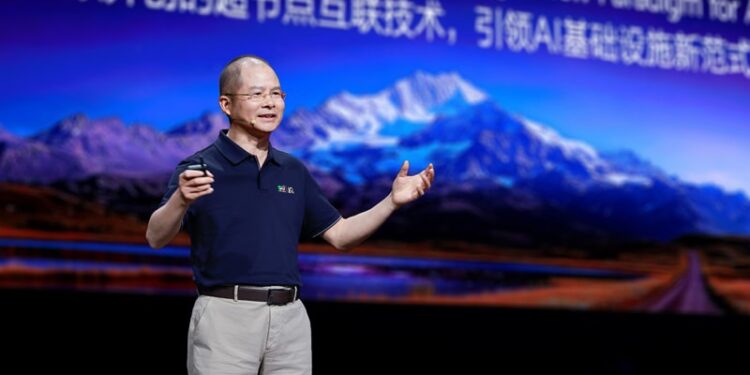Huawei has revealed an ambitious strategy to make thousands of its AI chips function as a single computer, a move that could transform global computing power. The design, announced at the company’s annual Huawei Connect event, highlights China’s determination to compete in advanced artificial intelligence despite restrictions on semiconductor technology.
SuperPoD at the core
At the centre of Huawei’s plan is the SuperPoD architecture, a system that interconnects servers and Ascend AI chips so they operate as one cohesive unit. Using a high-speed interconnect protocol known as UnifiedBus, Huawei aims to reduce latency and improve fault tolerance, enabling vast numbers of chips to “think” collectively rather than work as separate nodes.
Building at scale
The flagship system, the Atlas 950 SuperCluster, consists of 64 SuperPoDs, each hosting more than 8,000 chips. Together, the cluster can integrate over 500,000 Ascend processors, with performance claims of 1 ZettaFLOPS for inference and 524 ExaFLOPS for training. Huawei argues this scale is necessary to support the next generation of AI models, many of which are expected to hold hundreds of billions of parameters.
Addressing reliability challenges
Scaling AI infrastructure to this level presents significant technical hurdles. Huawei says UnifiedBus tackles these by offering sub-100-nanosecond fault detection and advanced optical interconnects, designed to ensure data flows efficiently across thousands of nodes. The company is also opening parts of the system, including specifications and compiler tools, to encourage wider adoption and third-party development.
Strategic necessity
Analysts note that Huawei’s approach reflects both ambition and necessity. With U.S. export controls limiting its access to advanced semiconductors, the company is focusing on architecture and integration as competitive levers. By pooling less advanced chips into massive clusters, Huawei seeks to rival the capabilities of more cutting-edge processors available to competitors.
Implications for AI infrastructure
If successful, Huawei’s architecture could reshape the way supercomputing is built, shifting the emphasis from chip performance alone to system-level design. The energy and cooling demands of such enormous clusters remain an open question, as does the ability of software to scale reliably. Yet the project underscores Huawei’s determination to stay at the forefront of AI innovation despite geopolitical and technological barriers.
Newshub Editorial in Asia – 26 September 2025









Recent Comments